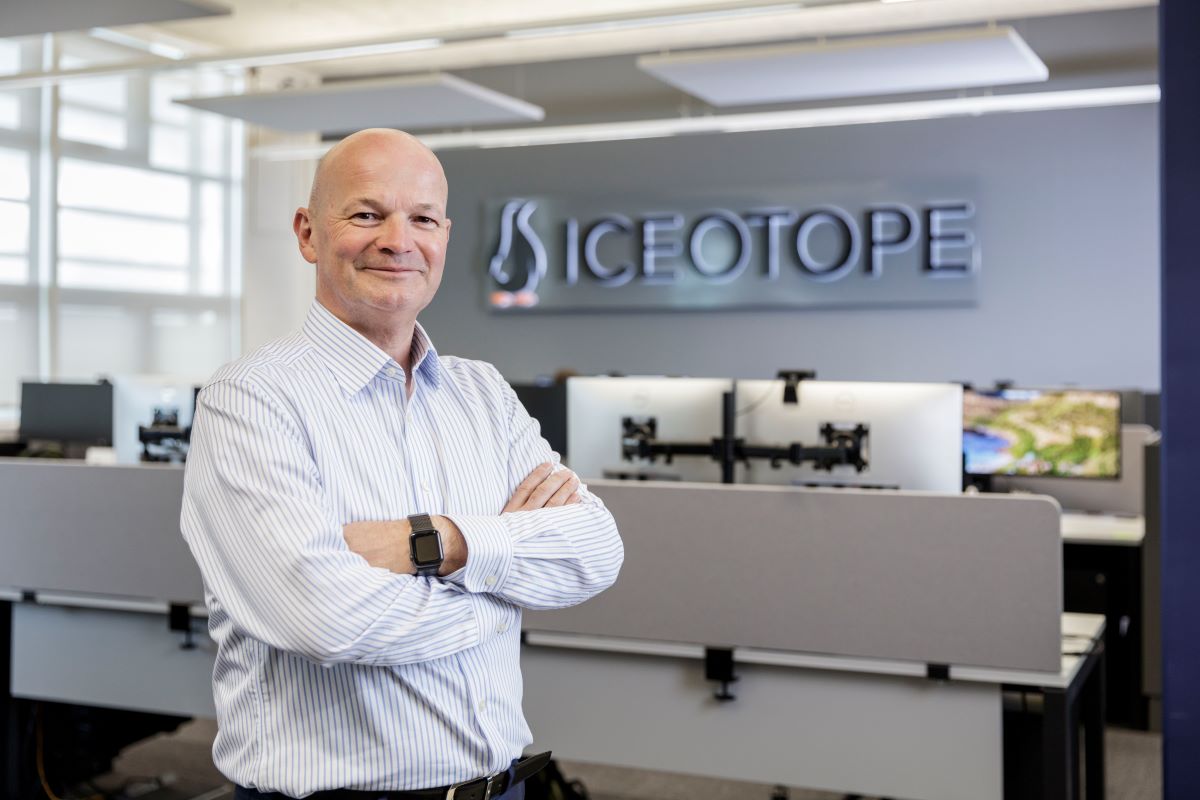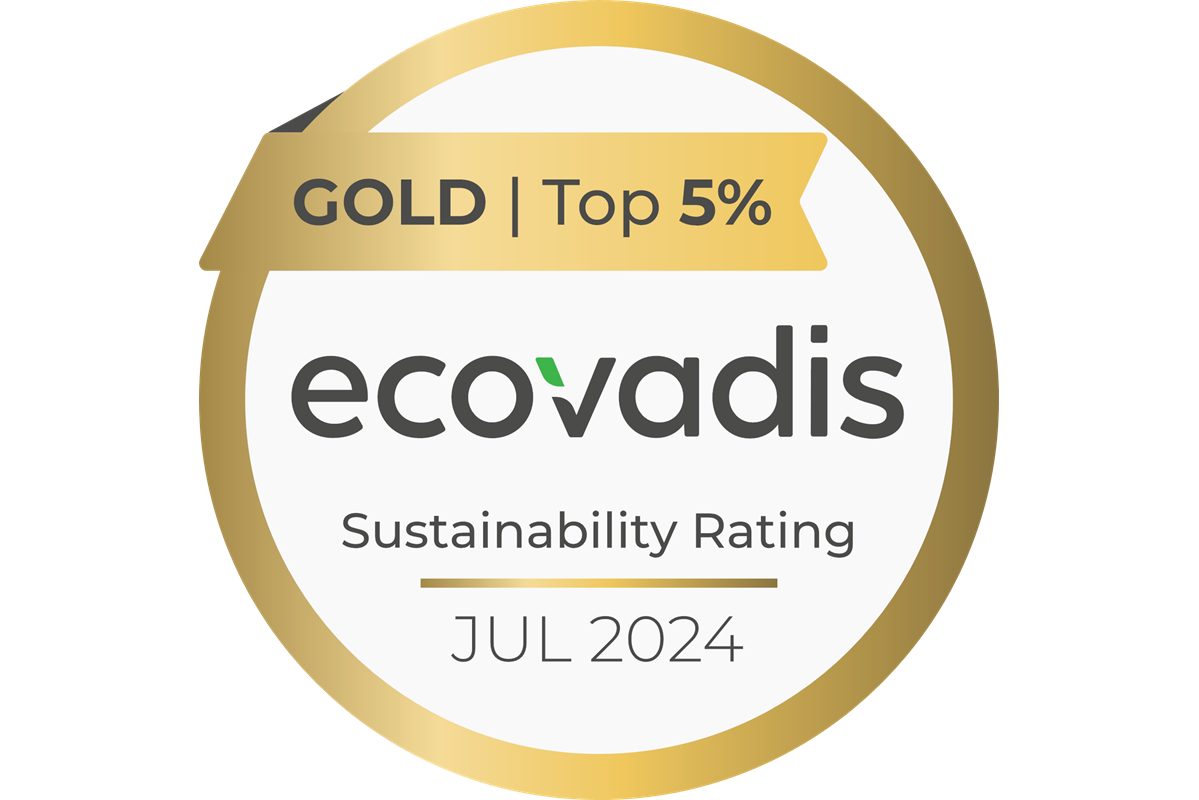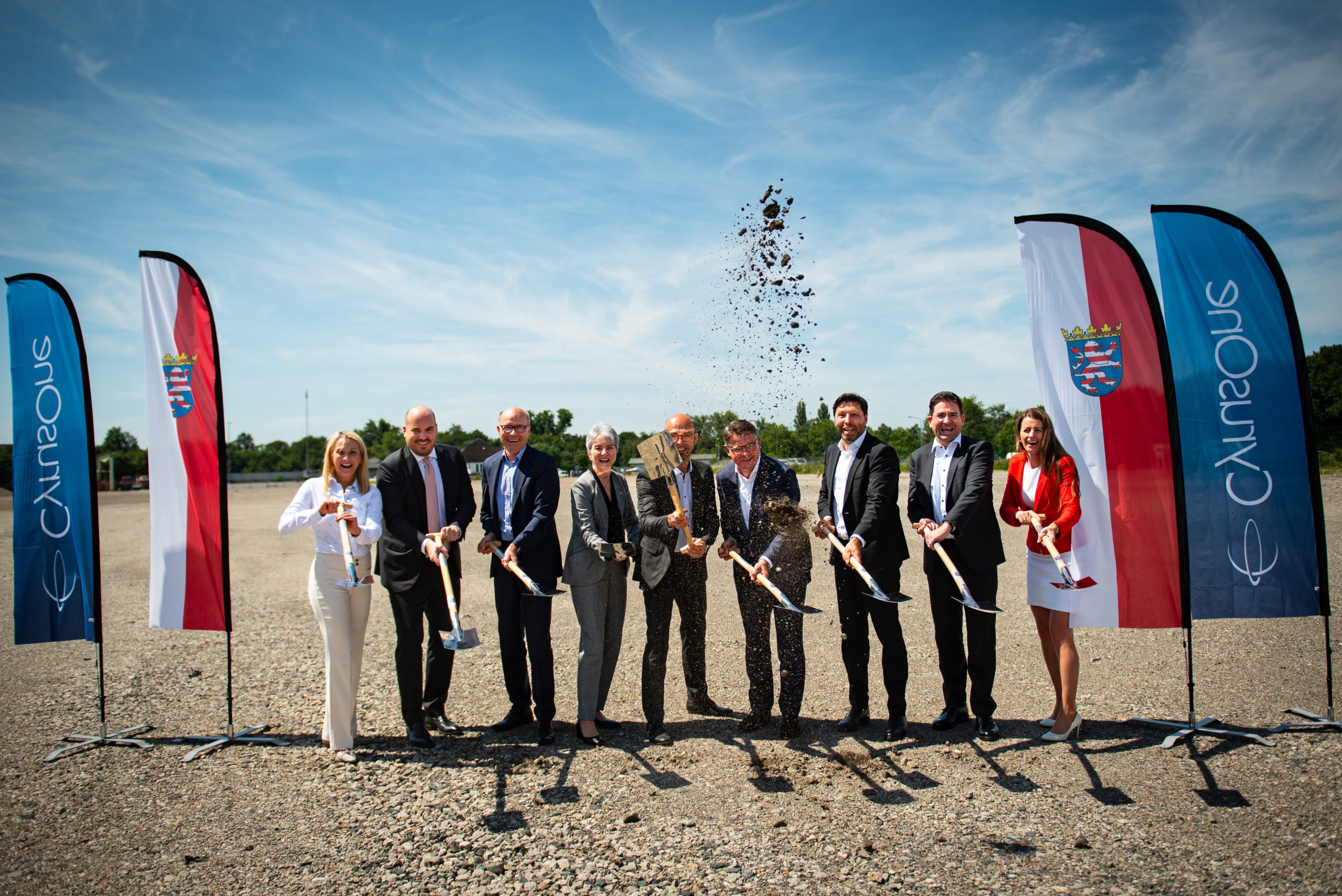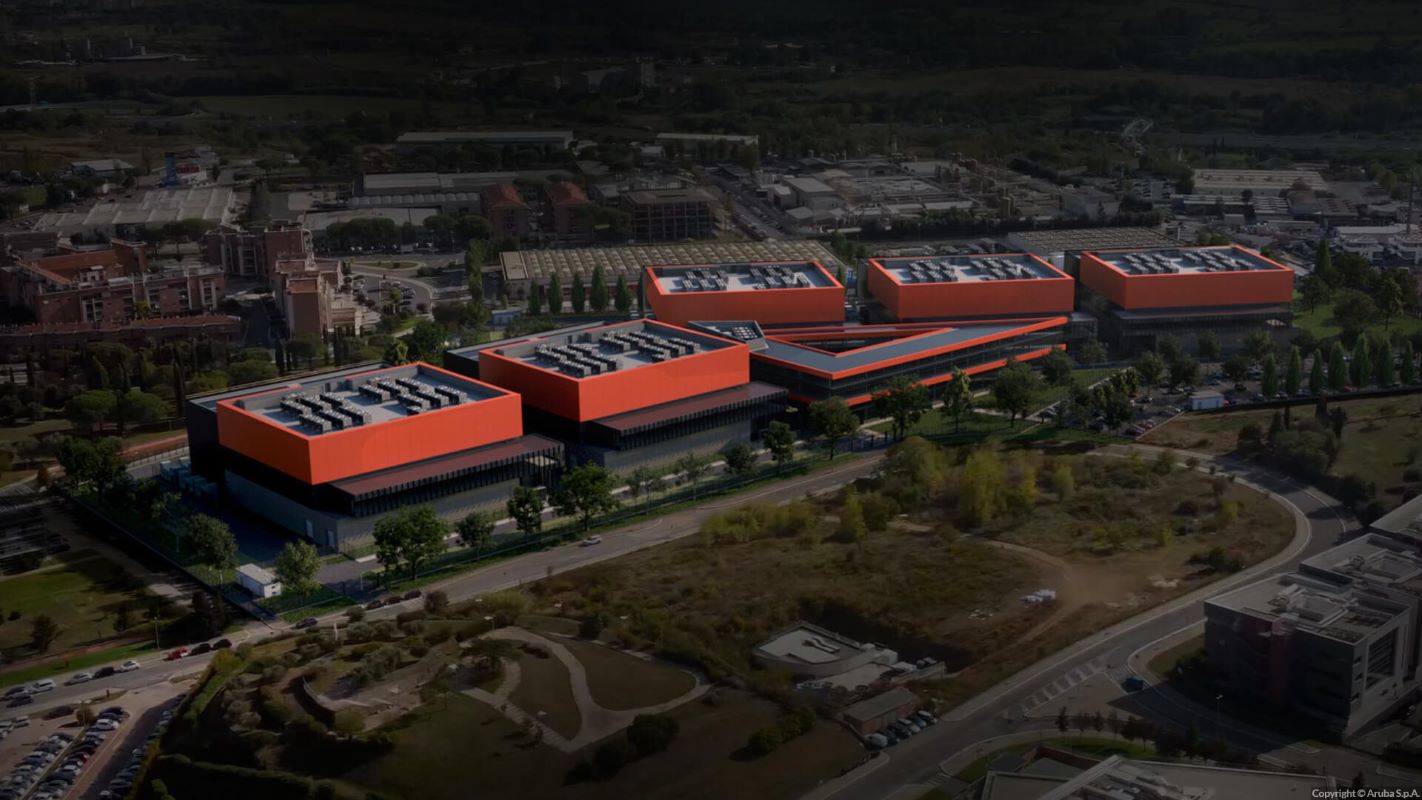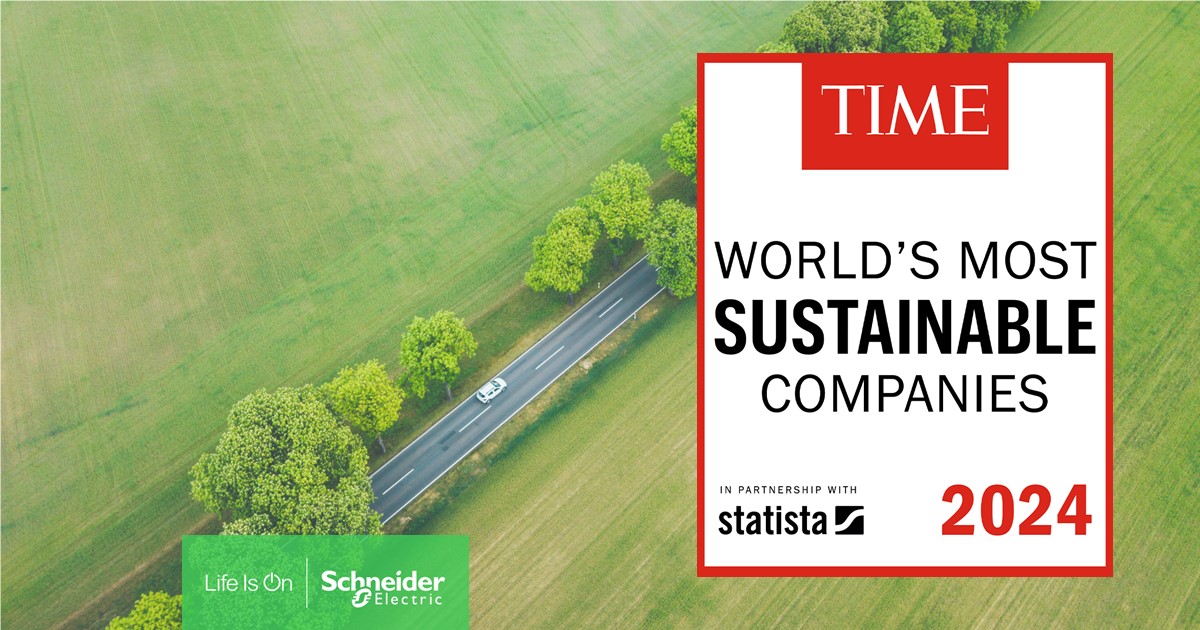Sustainable Infrastructure: Building Resilient, Low-Carbon Projects
Cooling
Data Centres
Liquid Cooling Technologies Driving Data Centre Efficiency
News
Sustainable Infrastructure: Building Resilient, Low-Carbon Projects
Iceotope announces the retirement of CEO David Craig
Iceotope, the precision liquid cooling specialist, has announced the retirement of David Craig from the position of CEO effective from 30 September 2024.
The company will be led jointly by Chief Commercial Officer (CCO) Nathan Blom and Chief Financial Officer (CFO), Simon Jesenko until the appointment of David’s successor. David will continue to advise the company and provide assistance during the transition period.
Nathan has a leadership background driving revenue and strategy in Fortune 500 companies, including Lenovo and HP. Simon is a deep tech finance executive with experience supporting private equity and venture capital-backed companies as they achieve hypergrowth.
David joined Iceotope in June 2015 and during his nine years at the helm, he has successfully guided the company through a transformative period as it seeks to become recognised as the leader in precision liquid cooling. His achievements include building a strong team with a clear vision to engineer practical liquid cooling solutions to meet emerging challenges, such as AI, distributed telco edge, high power dense computing, and sustainable data centre operations.
The company’s cooling technology is critical in meeting today’s global data centre sustainability challenges. Its technology removes nearly 100% of the heat generated, reduces energy use by up to 40% and water consumption by up to 100%. The strength of its technology has attracted an international consortium of investors that include ABC Impact, British Patient Capital, Northern Gritstone, nVent and SDCL.
David comments, “The past nine years have been an amazing ride – we have built a fantastic team, developed a great IP portfolio and created the only liquid cooling solution that addresses the thermal and sustainability challenges facing the data centre industry today and tomorrow.
“I have enjoyed every moment and have nothing but pride in the team, company and product. However, it feels like now is an appropriate time for me to step aside, enjoy retirement, and focus on other passions in my life; particularly my charitable work in the UK and Africa. I look forward to seeing the future success of Iceotope and can’t wait to see what comes next.”
Iceotope Chairman, George Shaw, states, “On behalf of everyone at Iceotope, we thank David for his dedication and endless enthusiasm for the company, the technology and the people who make it all possible. We know he will be a tremendous brand ambassador for precision liquid cooling in the years to come. We wish him all the best in his well-deserved retirement.”
For more from Iceotope, click here.
Simon Rowley - 29 July 2024
Data
News
Sustainable Infrastructure: Building Resilient, Low-Carbon Projects
R&M receives gold medal for sustainability
R&M, the globally active Swiss developer and provider of high-end infrastructure solutions for data and communications networks, has received the EcoVadis Gold Medal for sustainability.
As it has every year since 2016, the EcoVadis ranking platform recently analysed and evaluated R&M’s environmental, social and ethical performance. The assessors awarded the company 78 points (out of 100), thus granting R&M 'Gold status'. According to EcoVadis, R&M ranks among the top 5% of all companies rated in the past 12 months. Furthermore, in the 'Manufacture of cables and network technologies' sector, R&M ranks in the top 1% of manufacturers assessed.
"By awarding us the gold medal, EcoVadis recognises our significantly increased commitment to value-oriented sustainability. The EcoVadis assessment confirms that our sustainability measures are credible, verifiable and viable," says R&M CEO, Michel Riva.
"Over the past few months, R&M has broadened its perspective to include every stage of the value-added process and the entire supply chain," reports R&M COO and Sustainability Officer, Markus Stieger. "Another milestone was the identification of all factors with which we can balance greenhouse gas emissions in Scope 1, 2 and 3. This enabled R&M to create a scientifically sound basis last year for the strategic goal of net zero. More than two-thirds of R&M’s suppliers use a standardised environmental management system. R&M is working intensively on integrating the circular economy into all company-wide processes.
The managing directors and sustainability ambassadors from all R&M organisations are working closely together. R&M has globally standardised its own standards for personnel management, labour and human rights on the basis of the International Labour Organisation (ILO).
The EcoVadis rating is regarded internationally as a benchmark for the progress made by companies in the various spheres of activity relating to sustainability. The list of criteria includes climate and environmental protection, labour and human rights, procurement, business ethics and the documentation of sustainability measures.
For more from R&M, click here.
Simon Rowley - 26 July 2024
Data Centres
News
Sustainable Infrastructure: Building Resilient, Low-Carbon Projects
HIVE to build hydroelectric data centre in Paraguay
HIVE Digital Technologies, a leading digital asset miner and 'green' focused data centre builder and operator, has announced plans to construct a 100 megawatt digital asset mining operation in Paraguay.
Frank Holmes, HIVE's Executive Chairman, states, "We are thrilled to announce our plan for a 100 MW project in Paraguay, utilising green and clean energy sourced from the Itaipu hydroelectric dam. This potential opportunity is expected to add up to an additional 6.5 Exahash per second (EH/s) to our Bitcoin mining operations, increasing our global EH/s to 12.1 EH/s. This represents a significant milestone in our diversified growth strategy and supports our commitment to expanding our global footprint with data centre operations in Canada, Sweden, Iceland and now Paraguay. We are confident that this venture can deliver healthy returns and drive long-term value, fostering economic growth and innovation in the region."
Stability in government fiscal policies, such as energy pricing and taxation, will be a key factor in HIVE's future expansion considerations relating to continued growth in Paraguay. Infrastructure projects such as data centres require significant foreign direct investment and a large scale project, such as a 100 MW data centre, is expected to generate over $100 million (£77.3m) of stable revenue for the Government's utility company over the next three years.
As a Canadian public company, HIVE remains committed to full transparency and community engagement, creating local jobs and providing a stable income stream that benefits the national economy. By hiring locally, the company aims to contribute to regional economic growth, providing meaningful employment opportunities and fostering education and skill development.
In Paraguay, HIVE will offer its experience and expertise in grid balancing and demand response to support continued industrial development, while monetising surplus or under-monetised power assets. Additionally, as the company's energy bills will be paid in US dollars, its operations in Paraguay offer a unique opportunity for the government by providing stable monthly US dollar income, acting as a strategic currency hedge, and ensuring financial stability in an increasingly volatile global currency market. In 2023, electricity exports constituted approximately 13.2% of Paraguay's total exports.
HIVE says that it is proud to be at the forefront of sustainable and ethical Bitcoin mining practices. By leveraging renewable hydroelectric power, the company minimises its environmental footprint while contributing to the global transition toward greener energy solutions. This commitment to sustainability benefits the environment and aligns with growing consumer demand for eco-friendly business practices.
Executive Chairman Frank Holmes, Chief Operating Officer Luke Rossy, Hive Sweden Country President Johanna Thornblad, and General Legal Counsel Gabriel Ibghy were on the initial scoping trip to Paraguay. Frank Holmes added that both Johanna and Gabriel speak Spanish and together have experience navigating cultural and business landscapes in Latin America.
Gabriel Ibghy says, "We have made significant progress in identifying the data centre site and securing construction and power supply contracts. The transaction is subject to final agreements, due diligence, board approval, and regulatory approvals. We will announce further details soon."
Simon Rowley - 23 July 2024
Data Centres
News
Sustainable Infrastructure: Building Resilient, Low-Carbon Projects
CyrusOne breaks ground on data centre in Germany
CyrusOne, a global data centre developer and operator, has officially broken ground on its newest data centre in Germany (FRA7), strategically located on a 63,000 square metre plot at Frankfurt Westside; a 73-hectare commercial and industrial mixed-use regeneration project managed by BEOS AG and Swiss Life Asset Managers.
This latest milestone follows CyrusOne’s initial announcement in September 2023 confirming it had been selected to deliver a cutting-edge 81MW data centre scheme that prioritises sustainability within the development, representing one of the largest waste heat utilisation projects in Europe. CyrusOne’s strategic partnership with BEOS AG and Swiss Life Asset Managers was subsequently solidified with the official ‘handover protocol' in April 2024. The first phase of 9MW of IT capacity is expected to be delivered in Q2 2026.
“Germany is currently a critical growth market for CyrusOne in Europe,” says Carsten Schneider, MD Germany at CyrusOne. “We are investing significantly in the State of Hessen, and this groundbreaking further solidifies our commitment to make a positive impact and contribution to this state and to the German economy more widely. We look forward to continuing our valued partnership with BEOS AG as we work toward our shared objective to build the most sustainable and community-focused development.”
The FRA7 development represents an ultimate investment by CyrusOne anticipated to exceed €1 billion (£840m), and the project is expected to generate over 500 full-time positions both directly and within its immediate design and construction value chain. The company is committed to supporting local businesses wherever possible, employing local people and offering training and apprenticeship opportunities.
Working closely with the State of Hesse, the groundbreaking ceremony celebrates CyrusOne’s continued commitment to the German market, with distinguished attendees including Boris Rhein, Prime Minister of the State of Hesse, and Matthias Schmidt, Member of the Executive Board of BEOS AG.
"CyrusOne's commitment to Frankfurt affirms the strategic importance of Hesse as a hub for digital infrastructure in Europe," says the Prime Minister of Hesse, Boris Rhein. “As one of the leading providers of data centre services, CyrusOne strengthens the attractiveness of the data centre market in the greater Frankfurt metropolitan area and contributes to the economic strength of Hesse. Data centres are an essential requirement for further digitalisation, the application of artificial intelligence, and to enable digital transformation in our country."
“The collaboration with CyrusOne has served as a model for us from the outset, and we look forward to taking the next steps in this partnership,” comments Matthias Schmidt, Member of the Executive Board of BEOS AG. “The groundbreaking ceremony is another milestone in the implementation of our shared vision, in which the consistent pursuit of our ESG goals is an important building block. The symbiosis of data centre and campus development is now taking shape and will characterise Frankfurt Westside. What is being created here is not just a building – it is a symbol of international cooperation, as well as effective coordination with local politics and forward-thinking leadership.”
With sustainability at the heart of the Frankfurt Westside project, the campus has already been pre-assessed for DGNB Platinum, and CyrusOne’s highly efficient data centre has been designed to achieve a BREEAM ‘Very Good’ certification as a minimum. Additional best practices that will be implemented include:
Heat re-useProvision of waste heat by CyrusOne’s FRA7 data centre is a key aspect of Frankfurt Westside, with the facility capable of deploying up to 40MW of waste heat to the campus heating network through innovative methods when the data centre is operating at full capacity.
The process is designed to enable heat from the servers in the data halls to be absorbed into a water system that will be connected via heat exchangers to pipe network infrastructure, built and enabled by BEOS, that will in turn connect to the buildings on the development. Depending on the heat requirement, the temperature of the water will be increased via a solar-powered heat pump within each building. This will enable the local community of users, industrial tenants and employees to benefit from a 'waste' product, thus reducing their carbon footprint.
PowerCyrusOne and BEOS have contracted to secure significant power provision in a very competitive market for the entire development, with 150MVA utility power supply at 110kV. It also intends to invest in extensive construction measures to create a new redundant high-voltage grid connection and a dedicated substation serving the data centres and the entire campus.
This unique arrangement is designed to bring greater levels of efficiency in electrical distribution so that each building in the development is able to maximise the use of renewable-sourced energy and to align with the anticipated energy efficiency targets proposed by German legislation. The data centre is also designed to incorporate PV cells on the roof to generate power for the office areas and other ancillary spaces.
Biodiversity and communityCyrusOne and BEOS AG have worked together to breathe new life into the industrial park. The development as a whole will promote the efficient use of the existing structures, careful use of resources and provide open space designed for biodiversity, leisure, and recreation.
CyrusOne’s dedicated biodiversity initiatives will also be prioritised, with ecological landscaping to increase biodiversity and provide habitats for wildlife, the provision of 5,500 square metres of open green space, and the planting of over 60 trees. Over 1,800 square metres of the facility walls and roofs will be ‘green’, not only creating an aesthetically pleasing outlook for the local community but also improving air quality by filtering pollutants, reducing noise and supporting thermoregulation.
For more from CyrusOne, click here.
Simon Rowley - 19 July 2024
Data Centres
News
Scalable Network Attached Solutions for Modern Infrastructure
Sustainable Infrastructure: Building Resilient, Low-Carbon Projects
BCS responds to Chancellor's speech on data centres
John Booth, a data centre expert from BCS, The Chartered Institute for IT, has given his reaction to the new Chancellor's speech regarding data centres and lifting the ban on onshore wind.
John comments, “We welcome the announcement by the Chancellor (Rachel Reeves) on a review of planning permission for digital infrastructure, including data centres. But we should not lose sight of the UK’s net zero ambitions and climate goals. We would advise a strategic approach using a spatial strategy to locate data centres outside the South East (i.e. around London), where the tech giants are based. Allowing data centres to be built on the green belt will not be sufficient; significant investment in the grid and distribution networks will also be required.
“Whilst placing data centres near cities makes sense given the amount of time it takes for data to travel from one place to another, the government should also prioritise looking further afield to areas with more space, cooler temperatures, and abundant power resources.
“Planning permission should include enhanced energy efficiency and sustainability requirements, including the use of recovered heat and replicating existing EU legislation regarding reporting energy and environmental data.
“Lifting the ban on onshore wind is a positive move. However, location is important to easily connect the energy generated to the infrastructure - the national grid. This must be a central consideration.
“In addition, the sector faces a skills shortage in construction and operations, and additional investment in training and skills will be required.”
The new Chancellor, Rachel Reeves, assumed her position on 5 July 2024.
Simon Rowley - 8 July 2024
Data Centres
News
Sustainable Infrastructure: Building Resilient, Low-Carbon Projects
Aruba achieves certification for new Rome data centre
Aruba, an Italian provider of cloud, data centre, hosting, e-mail, domain registration and PEC (certified email) services, has announced that it has achieved ANSI/TIA-942-C Rating 4 Constructed Facility certification for Data Centre A of the Hyper Cloud Data Centre campus located within the Tecnopolo Tiburtino area in Rome.
The certification issued by EPI, one of the world's leading providers of data centre training and TIA-942 audit/certification, ensures (as a result of rigorous inspections) not only full compliance with the standard in terms of design and planning, but also total correspondence and conformity of what is actually built.
The ANSI/TIA-942 standard assesses the resilience of a data centre, such as its ability to ensure the continuity of services provided. In detail, the Telecommunication Industry Association (TIA) develops its standards in accordance with the procedures of the American National Standards Institute (ANSI), which require them to be revised every five years. The ANSI/TIA-942-C standard, released in May 2024, presents an essential update to ensure that the implementation of new applications and technologies in data centres results in improved performance, service delivery and resilience in various aspects through more stringent risk analysis.
Among the main new features of ANSI/TIA-942-C, it highlights that environmental sustainability and combating climate change are given greater attention with new considerations, including risk and context analysis, thus ensuring that the standard is brought in line with the most modern and stringent regulations.
To date, all the data centres at the Ponte San Pietro (BG) campus, to which this first building at the Rome campus is added, comply with ANSI/TIA-942 Rating 4. This result was achieved thanks to a series of design and construction arrangements involving multiple aspects of data centre design and construction: site selection, architectural aspects, physical security, fire protection systems, electrical system, mechanical system and data networks.
This also helps to ensure compliance with the requirements for the provision of services to the Public Administration as recently recognised by ACN (the National Cybersecurity Authority) with the assignment of the QI3 level to Aruba infrastructures, hence ensuring high levels of security.
Stefano Cecconi, CEO of Aruba, comments, "Obtaining the highest levels of certification for our infrastructure is a cornerstone of our data centre and colocation services development strategy. Over the years, our internal teams have built important know-how that has enabled us to design and build data centres that have easily reached, and sometimes exceeded, the highest standards that various regulations over time have offered us.
"It is in this way that Aruba is committed to providing services capable of guaranteeing the highest performance and business continuity to public and private customers who need to ensure the functioning of their IT infrastructures, applications, services or more generally of their online business".
For more from Aruba, click here.
Simon Rowley - 5 July 2024
Artificial Intelligence in Data Centre Operations
Data
Data Centre Operations: Optimising Infrastructure for Performance and Reliability
News
Sustainable Infrastructure: Building Resilient, Low-Carbon Projects
Google’s emissions soar 48% over five years due to AI
Google’s greenhouse gas emissions have soared 48% over the past five years, with its Artificial Intelligence (AI) products relying on energy-intensive data centres.
Google labelled "increases in data centre energy consumption and supply chain emissions" as the primary driver behind the rise, with total emissions reaching 14.3 million metric tons, according to its annual environmental report.
It is estimated that data centres contribute 2.3% to 3.7% of the world’s CO2 emissions, surpassing the global aviation industry, which accounts for 2.1%.
In the report, Google said that "reaching net zero emissions by 2030 is an extremely ambitious goal and we know it won’t be easy", citing that the future of AI and its environmental impact is "complex and difficult to predict".
Last week, Microsoft’s Co-Founder, Bill Gates, downplayed AI’s climate impact, saying that it would be more of a help than a hindrance. He also said that big tech is "seriously willing" to pay the extra premium to bootstrap clean energy capacity.
At the end of 2023, Google released Gemini, which is positioned as a competitor to OpenAI’s ChatGPT-4 and Google’s biggest leap into the AI trend. The tech giant is also placing AI at the heart of its new Pixel phones in order to make them ‘even more helpful’.
John Kirk, CSO at ITG comments, “The insatiable demand for AI adoption is already fuelling a wave of increased emissions, leaving big brands open to scrutiny around their sustainability credentials. Forward-thinking organisations will need to look again at the impact their operations are having on the environment and work with partners in the supply chain, such as creative agencies, to provide a more open and honest account of their activities. Customers now expect both accountability and a clear action plan to offset or reduce emissions, and without it, trust will be lost.”
Simon Rowley - 3 July 2024
Data Centre Infrastructure News & Trends
Innovations in Data Center Power and Cooling Solutions
News
Sustainable Infrastructure: Building Resilient, Low-Carbon Projects
Centiel to open new office in Kingdom of Saudi Arabia
Leading uninterruptible power supplies (UPS) manufacturer, Centiel, is opening a new office in the Kingdom of Saudi Arabia as the company continues to expand internationally.
Centiel’s manufacturing base for its award-winning UPS solutions is in Switzerland, and the company also has offices around the world including in the UK, Dubai, Abu Dhabi, Qatar and Singapore among others.
Gerado Lecuona, Co-Founder & Global Sales Director, Centiel, comments, “Our expansion is in line with Centiel's continued commitment to provide leading UPS solutions for organisations requiring high quality and more resilient technology for critical power protection in more international locations. It is essential that we maintain close relationships with our valued customers and regionally based offices ensure prompt technical support and delivery. We can also offer expert training as required locally, and our comprehensive approach underlines Centiel’s constant focus on excellence and responsiveness to deliver our industry leading critical power protection solutions.”
Following four years’ development, Centiel recently launched StratusPower, a true modular UPS to provide complete peace of mind in relation to power availability while helping data centres become more sustainable. StratusPower offers '9 nines' (99.9999999%) availability to effectively eliminate system downtime; safe semiconductor technology with a close to 98% VFI efficiency to minimise running costs; true 'hot swap' modules to eliminate human error in operation and also includes long-life components to improve sustainability and provide a 30-year useful working life. Uniquely, StratusPower has also been designed with the future of renewables, such as solar and wind, in mind.
In 2023, Centiel was confirmed as the recipient of a Frost & Sullivan Award for Technology Innovation Leadership in the Global UPS Industry and in 2024 Centiel was awarded for its outstanding contribution to sustainability and efficiency in the data centre market.
Centiel now protects critical loads for data centres and comms rooms in over 100 countries across five continents. For further information, visit centiel.com.
For more from Centiel, click here.
Simon Rowley - 3 July 2024
News
Sustainable Infrastructure: Building Resilient, Low-Carbon Projects
Schneider named world’s most sustainable company
Schneider Electric has topped the 'World's Most Sustainable Companies for 2024' list by Time magazine and Statista.
This recognition reflects Schneider Electric's ambitious goals to reduce its own emissions, but also the company’s commitment to helping its customers to become more energy efficient and reduce their emissions.
Time and Statista used a transparent, multi-stage methodology to identify the world's most sustainable companies for 2024. The process began with a pool of over 5,000 of the world's largest and most influential companies. Following a rigorous four-stage assessment, the final ranking excluded unsustainable industries and considered factors like external sustainability ratings and commitments, corporate reporting practices, and environmental and social performance indicators. This comprehensive approach produced a ranking of 500 companies from over 30 countries.
Both Time and Statista highlighted Schneider Electric's technological expertise and the Schneider Sustainability Impact (SSI) programme. This programme drives and measures the company’s progress toward global sustainability 2021–2025 targets, contributing to six long-term commitments that cover all environmental, social, and governance (ESG) dimensions.
Among this progress, the company helped customers reduce their carbon emissions, with 553 million tonnes of CO2 saved and avoided since 2018. The company has also made significant progress in transforming its own supply chain. Carbon emissions from Schneider Electric's top 1,000 suppliers fell by 27% since the beginning of the programme – and 21% of the company's most strategic supply chain partners have met Schneider Electric's decent work standards.
"We are incredibly honoured to be recognised as the world's most sustainable company," says Peter Herweck, CEO of Schneider Electric. “This achievement is a testament to our unwavering commitment to sustainability, which is embedded in everything we do. We consider the environment, society, and good governance in our decisions and daily operations. That's why we're pushing hard to make even more progress on our sustainability goals and ensure everyone contributes to creating a positive and enduring impact”.
Schneider Electric was also recently included in the Dow Jones Sustainability World Index for the 13th consecutive year, ranked number one in its industry and securing its place in the Europe index. This achievement reflects Schneider's strong environmental, social, and governance (ESG) performance, with sustainability at the core of its strategy.
For more from Schneider Electric, click here.
Simon Rowley - 28 June 2024
Data Centres
News
Sustainable Infrastructure: Building Resilient, Low-Carbon Projects
Aligned’s data centres earn Green Globes
Aligned Data Centers, a technology infrastructure company offering innovative, sustainable and adaptive scale data centres and build-to-scale solutions for global hyperscale and enterprise customers, has announced that its Phoenix and Chicago data centres have received Green Globes for New Construction certification from the Green Building Initiative (GBI).
Both data centres received a rating of Three Green Globes for their design and construction, demonstrating outstanding success in resource efficiency, environmental impact reduction, and occupant well-being.
"We're incredibly proud to receive Three Green Globes certification from the GBI for our data centres in Phoenix and Chicago," says Andrew Schaap, CEO of Aligned Data Centers. "This recognition further validates our commitment to sustainable data centre design and construction in today's age of AI and high-performance computing, where efficiency and environmental responsibility have become even more crucial. Our commitment goes beyond simply minimising environmental impact – we're pioneering innovative solutions that prioritise energy efficiency and occupant well-being, ensuring a thriving and sustainable data centre ecosystem for the future."
Founded in 2004, GBI is an international non-profit organisation and American National Standards Institute (ANSI) accredited standards developer dedicated to improving the built environment’s impact on climate and society. GBI’s Green Globes third-party certification process involves a design and on-site assessment and evaluates environmental assessment areas including project management, site, energy, water, resources, emissions, and indoor environment.
“Aligned Data Centers is deeply committed to improving the sustainability, health, and resilience of its portfolio through its use of Green Globes certification,” notes Vicki Worden, GBI President & CEO. “The achievement of Three Green Globes for two new data centres demonstrates Aligned’s innovative strategies that improve energy and water efficiency, positively impact local communities, and lead the way for a more sustainable data centre industry.”
In addition to receiving high rankings in areas related to project management, site, and energy, GBI’s final assessment report for Aligned’s PHX-04 recognised the data centre for using sustainable materials in the construction of its building core and shell, the low ozone-depleting potential of its cooling systems, as well as the control and measurement of indoor pollutants, and the environmental integrity of the facility’s ventilation.
Aligned’s ORD-02 was recognised by Green Globes for the company’s integrated design approach and selection of a previously developed site with access to existing utilities for its newest Chicagoland facility. The material and product selections for ORD-02 were strongly supported by the use of environmental product declarations (EPDs) for both the building core and shell as well as the interior fit-out. Widely used in the green building and construction materials industries, EPDs are internationally recognised transparency reports detailing how materials and products impact the environment. GBI’s Green Globes assessment also noted Aligned’s sustainability policy that ensures 100% of its US-based data centres are matched with renewable energy sources.
In August 2022, Aligned’s ORD-01 data centre was also awarded the ranking of Three Green Globes in recognition of its outstanding achievements in sustainable design and construction. The facility was the first newly constructed data centre in Illinois to earn Green Globes certification, and one of only six certified data centres in the world to receive a ranking of Three Green Globes. Aligned's Sustainability Programme recognises the importance of industry-leading certifications like Green Globes that encourage improved environmental and health performance for data centres, and plans to integrate them across future North American developments.
Simon Rowley - 25 June 2024

Head office & Accounts:
Suite 14, 6-8 Revenge Road, Lordswood
Kent ME5 8UD
T: +44 (0)1634 673163
F: +44 (0)1634 673173
